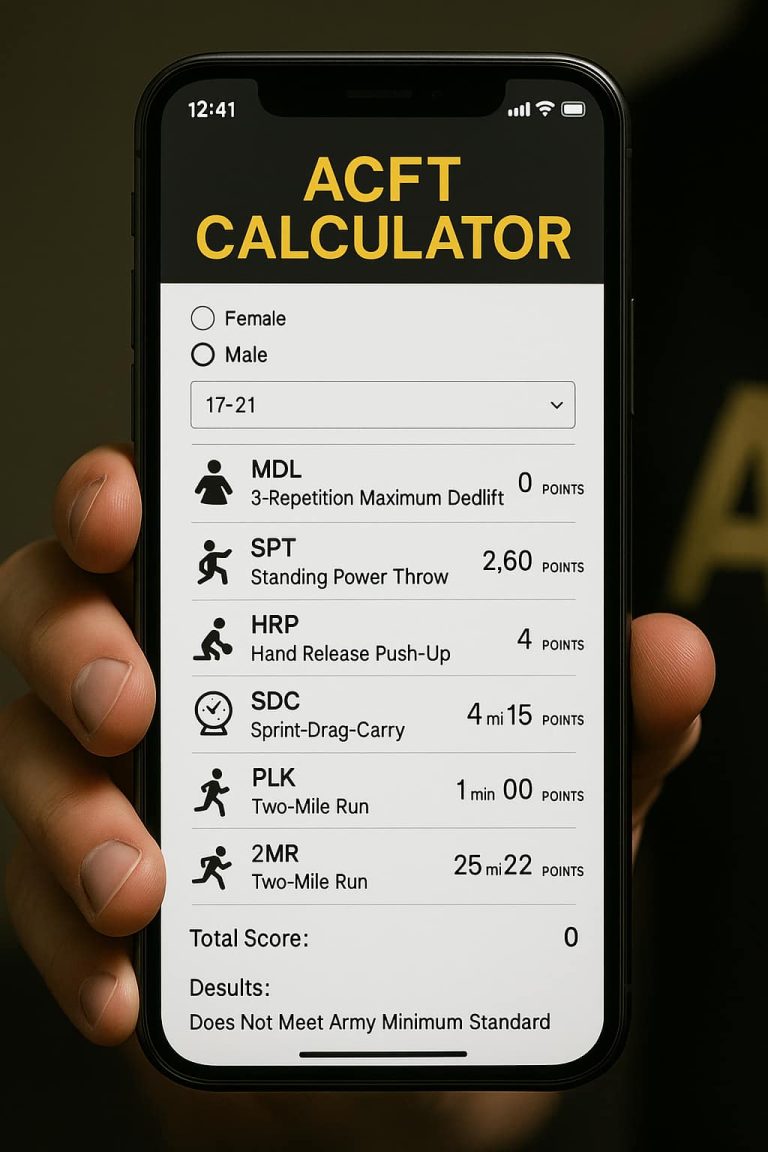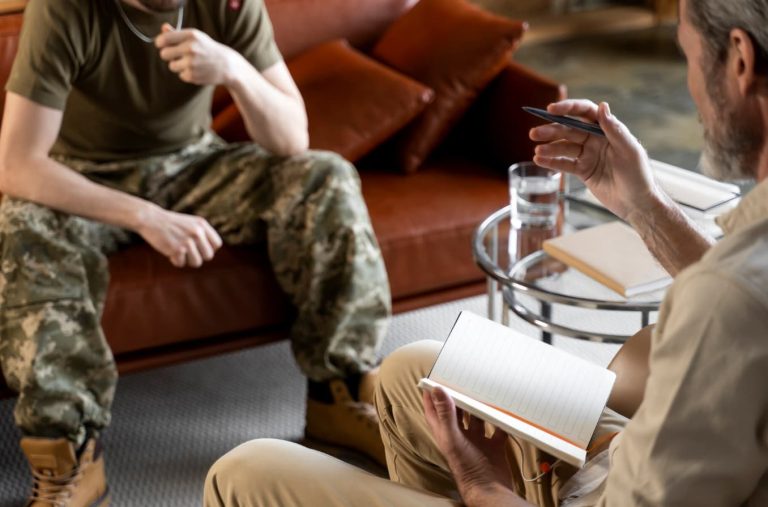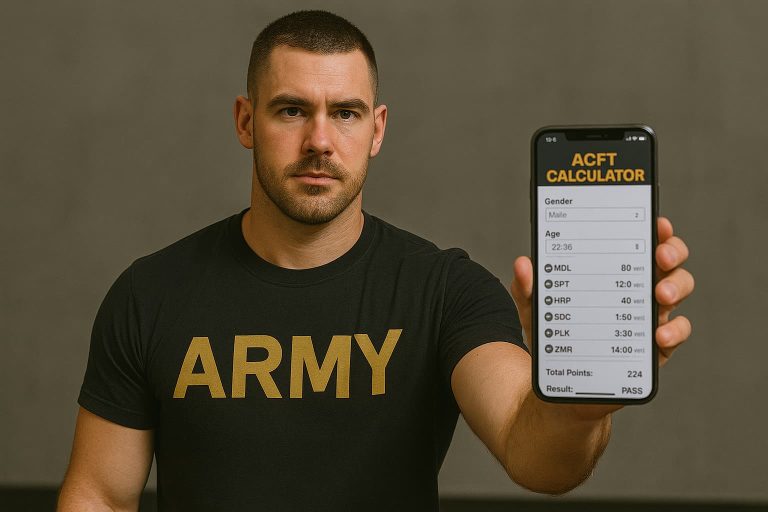US Army Height and Weight Standards for 2025
The US Army maintains strict height and weight standards to ensure every soldier is physically capable of performing their duties effectively and safely.
These standards aren’t arbitrary numbers they’re carefully established criteria that directly impact your health, combat readiness, and mission success.
Whether you’re preparing to enlist or you’re an active-duty soldier, understanding and meeting these requirements is essential for your military career.
These standards help maintain the Army’s reputation as one of the world’s most elite fighting forces while protecting individual soldiers from preventable injuries and health issues.
US Army Height and Weight Standards for 2025

We recommend checking and managing your measurements regularly using military fitness tools and support services to stay ahead of any potential issues and maintain peak readiness.
Importance of Army Height and Weight Standards
The Army’s height and weight standards serve multiple critical purposes that extend far beyond simple appearance requirements. These standards are fundamentally about maintaining a healthy, effective, and combat-ready force.
- Health and Safety Protection Proper height-to-weight ratios reduce the risk of injuries during training and combat operations. Soldiers who maintain appropriate body composition experience fewer stress fractures, joint problems, and cardiovascular issues that could compromise their ability to serve effectively.
- Mission Readiness Combat situations demand peak physical performance. Soldiers who meet height and weight standards demonstrate the physical capability to carry heavy equipment, navigate challenging terrain, and maintain endurance during extended operations.
- Universal Application These standards apply equally to new recruits entering basic training and seasoned soldiers throughout their careers. Whether you’re in the infantry, logistics, or military intelligence, maintaining proper physical standards is non-negotiable.
- Force Effectiveness A physically fit force is a more effective force. When every soldier meets these standards, it contributes to unit cohesion, operational success, and the Army’s overall combat capability.
Height and Weight Standards for Men (2025)
The Army’s height and weight standards for men are based on age groups and height measurements, with weight limits increasing slightly as soldiers age to account for natural metabolic changes.
Minimum Height Requirement: 60 inches (5 feet) for male soldiers
Weight Standards by Age Group:
Sample Weight Standards for Men
5’6″ (66 inches) Male Soldier:
- Ages 17-20: Maximum 160 lbs
- Ages 21-27: Maximum 163 lbs
- Ages 28-39: Maximum 168 lbs
- Ages 40+: Maximum 170 lbs
5’10” (70 inches) Male Soldier:
- Ages 17-20: Maximum 180 lbs
- Ages 21-27: Maximum 185 lbs
- Ages 28-39: Maximum 189 lbs
- Ages 40+: Maximum 192 lbs
6’2″ (74 inches) Male Soldier:
- Ages 17-20: Maximum 201 lbs
- Ages 21-27: Maximum 206 lbs
- Ages 28-39: Maximum 211 lbs
- Ages 40+: Maximum 214 lbs
Key Points:
- Weight limits increase with both height and age
- All soldiers must meet minimum weight requirements (typically 97-173 lbs depending on height)
- Maximum weights are strictly enforced during regular fitness assessments
Height and Weight Standards for Women (2025)
Female soldiers follow similar age-based weight progression but with different baseline requirements that account for physiological differences.
Minimum Height Requirement: 58 inches (4 feet 10 inches) for female soldiers
Sample Weight Standards for Women
5’4″ (64 inches) Female Soldier:
- Ages 17-20: Maximum 145 lbs
- Ages 21-27: Maximum 147 lbs
- Ages 28-39: Maximum 149 lbs
- Ages 40+: Maximum 151 lbs
5’6″ (66 inches) Female Soldier:
- Ages 17-20: Maximum 155 lbs
- Ages 21-27: Maximum 156 lbs
- Ages 28-39: Maximum 158 lbs
- Ages 40+: Maximum 161 lbs
5’8″ (68 inches) Female Soldier:
- Ages 17-20: Maximum 164 lbs
- Ages 21-27: Maximum 166 lbs
- Ages 28-39: Maximum 168 lbs
- Ages 40+: Maximum 171 lbs
Important Notes:
- Female standards account for differences in body composition
- Age-related weight increases are smaller than those for male soldiers
- Minimum weights range from 91-173 lbs based on height
Height Standards by Category
Different Army roles and career paths have varying height requirements to ensure soldiers can effectively perform their specific duties.
Initial Entry Soldiers
Male Recruits: Minimum 60 inches (5’0″), Maximum 80 inches (6’8″) Female Recruits: Minimum 58 inches (4’10”), Maximum 80 inches (6’8″)
New recruits must meet these standards before beginning basic training. Height measurements are taken during the Military Entrance Processing Station (MEPS) examination.
Active Duty & Reserve Soldiers
Once enlisted, soldiers maintain the same height requirements throughout their service. However, certain Military Occupational Specialties (MOS) may have additional height restrictions based on equipment requirements or operational needs.
Officer Candidates
Male Officer Candidates: Minimum 60 inches (5’0″) Female Officer Candidates: Minimum 58 inches (4’10”)
Officer candidates follow the same basic height requirements as enlisted personnel, but leadership roles may require additional physical assessments.
Special Considerations:
- Extremely tall soldiers (over 78 inches) may face limitations in certain vehicle operations or confined spaces
- Very short soldiers may require equipment modifications for optimal performance
- Some special operations roles have additional height requirements
Army Weight & Body Fat Requirements
The Army uses a two-tier system to evaluate soldier fitness: weight standards and body fat composition when weight limits are exceeded.
Maximum Allowable Weight Standards
Weight limits are calculated using Body Mass Index (BMI) principles but are specifically tailored to military operational requirements. These standards ensure soldiers can:
- Wear and carry standard military equipment effectively
- Maintain endurance for extended operations
- Fit properly in military vehicles and aircraft
Body Fat Assessment Process
When soldiers exceed maximum weight limits, they undergo body fat percentage testing through the Army Body Composition Program (ABCP).
Body Fat Limits:
- Male Soldiers: Maximum 20% body fat (ages 17-20), increasing to 24% (ages 40+)
- Female Soldiers: Maximum 30% body fat (ages 17-20), increasing to 34% (ages 40+)
Measurement Method: The Army uses circumference-based tape testing to estimate body fat percentage. For men, measurements include neck and waist circumference. For women, measurements include neck, waist, and hip circumference.
Army Body Composition Program (ABCP)
Soldiers who exceed weight standards but meet body fat requirements may remain in good standing. However, those who fail both weight and body fat standards enter the ABCP, which includes:
- Nutritional counseling
- Supervised exercise programs
- Regular progress monitoring
- Medical evaluation if necessary
Consequences of Noncompliance
The Army takes height and weight standards seriously, but the system is designed to help soldiers succeed rather than simply punish failure.
Progressive Response System
First-Time Failure:
- Mandatory counseling session with unit leadership
- Development of individualized improvement plan
- Access to nutritional and fitness resources
- 90-day improvement period
Continued Noncompliance:
- Formal counseling and documentation
- Enrollment in specialized fitness programs
- Potential restriction of certain privileges
- Additional medical evaluation
Persistent Failure:
- Administrative action including possible rank reduction
- Restriction from promotion or special assignments
- Formal flag action preventing awards or favorable personnel actions
Final Resort:
- Initiation of separation proceedings
- Discharge from military service
- Loss of military benefits and career
Support Systems Available
The Army provides extensive support before considering separation:
- Master Fitness Trainer assistance
- Nutritional counseling services
- Medical evaluation for underlying conditions
- Mental health support if needed
- Unit-level mentorship programs
Tips to Stay Within Standards
Maintaining Army height and weight standards requires consistent effort and smart lifestyle choices.
Here are proven strategies that work for soldiers at every level.
Consistent Exercise
Strength Training:
- Focus on compound movements (squats, deadlifts, pull-ups)
- Include functional exercises that support military tasks
- Train 3-4 times per week for optimal results
- Use tools like the ACFT Calculator to track overall fitness progress
Cardiovascular Exercise:
- Running remains the foundation of Army fitness
- Include interval training for improved performance
- Add swimming, cycling, or rowing for variety
- Aim for 150 minutes of moderate cardio weekly
Military-Style Training:
- Practice ruck marching with progressively heavier loads
- Include obstacle course training when available
- Focus on functional movements over cosmetic exercise
Balanced Diet
Nutrient-Dense Foods:
- Prioritize lean proteins (chicken, fish, lean beef, beans)
- Include complex carbohydrates (brown rice, quinoa, sweet potatoes)
- Eat plenty of vegetables and fruits for vitamins and fiber
- Choose healthy fats (nuts, olive oil, avocados)
Meal Preparation:
- Plan and prep meals in advance to avoid poor food choices
- Use dining facility options wisely when available
- Carry healthy snacks to prevent vending machine temptation
- Learn to make smart choices when eating out
Foods to Limit:
- Processed foods high in sodium and preservatives
- Sugar-sweetened beverages and energy drinks
- Excessive alcohol consumption
- High-calorie fast food options
Portion Control
Practical Strategies:
- Use smaller plates to naturally reduce portion sizes
- Fill half your plate with vegetables at each meal
- Measure portions until you develop a good eye for appropriate sizes
- Eat slowly and pay attention to hunger cues
Calorie Awareness:
- Understand that weight management is ultimately about calorie balance
- Track food intake for a few weeks to understand eating patterns
- Balance calorie intake with physical activity levels
- Avoid “diet mentality” in favor of sustainable lifestyle changes
Hydration
Daily Water Intake:
- Aim for at least 8-10 glasses of water daily
- Increase intake during hot weather or intense training
- Monitor urine color as a hydration indicator (should be light yellow)
- Carry a water bottle throughout the day
Performance Benefits:
- Proper hydration supports metabolism and weight management
- Helps control hunger and prevents mistaking thirst for hunger
- Improves exercise performance and recovery
- Supports overall health and energy levels
ACFT Calculator
After following each practice, you must check your ACFT score by using our free acft calculator and analyse your body parameteres to pass the test.
Final Thoughts
Maintaining Army height and weight standards is more than just meeting numbers on a scale—it’s about ensuring you’re physically prepared for whatever mission comes your way.
These standards exist to keep you healthy, effective, and ready to serve alongside your fellow soldiers.
The requirements might seem challenging, but they’re absolutely achievable with the right approach and consistent effort.
Remember that the Army provides extensive resources and support systems to help you succeed. Take advantage of fitness programs, nutritional counseling, and unit support available to you.
Whether you’re enlisting or already serving, staying in shape is a lifelong mission that extends far beyond your military career.
The habits you develop now will serve you well throughout your life, contributing to better health, increased confidence, and improved quality of life.
Don’t wait until your next weigh-in to start taking action. Review your current status regularly, set realistic goals, and seek help early if you’re struggling.
Your commitment to meeting these standards demonstrates your dedication to the Army’s core values and your fellow soldiers.
Whether you’re enlisting or already serving, staying in shape is a lifelong mission that benefits both your military career and your personal well-being.
Frequently Asked Questions
- What happens if I fail my weight check?
If you fail to meet weight standards, you’ll receive counseling and enter a 90-day improvement program. During this time, you’ll have access to nutritional guidance, fitness support, and regular progress monitoring. Continued failure may result in administrative action or enrollment in the Army Body Composition Program.
- Are there exemptions to the height and weight standards?
Very limited exemptions exist and are granted only in exceptional circumstances, typically for medical reasons or unique operational requirements. These exemptions require approval from higher command levels and thorough medical documentation.
- How often are measurements taken?
Active-duty soldiers typically undergo height and weight assessments during their annual physical fitness test or as directed by unit leadership. However, commanders may order additional assessments if concerns arise about a soldier’s physical condition.
- Can I get support if I’m struggling to meet standards?
Absolutely. The Army provides extensive support including Master Fitness Trainers, nutritional counseling, medical evaluation, and unit-level mentorship programs. The goal is to help soldiers succeed, not to remove them from service.
- Can I be discharged if I don’t improve my weight?
Discharge is possible but only after extensive support efforts and multiple opportunities for improvement. The Army invests significant resources in helping soldiers meet standards before considering separation. However, persistent failure to meet standards after receiving support can result in administrative separation.





